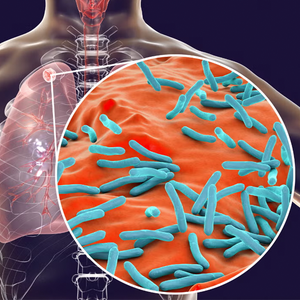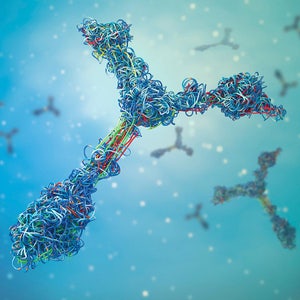

HTRF Human Phospho-STING (Ser366) Detection Kit, 500 Assay Points


HTRF Human Phospho-STING (Ser366) Detection Kit, 500 Assay Points






This HTRF kit enables the cell-based quantitative detection of phosphorylated STING as a readout of the activation of the cGAS-STING pathway
| Feature | Specification |
|---|---|
| Application | Cell Signaling |
| Sample Volume | 16 µL |
This HTRF kit enables the cell-based quantitative detection of phosphorylated STING as a readout of the activation of the cGAS-STING pathway



HTRF Human Phospho-STING (Ser366) Detection Kit, 500 Assay Points



HTRF Human Phospho-STING (Ser366) Detection Kit, 500 Assay Points



Product information
Overview
This HTRF cell-based assay conveniently and accurately quantifies phosphorylated STING at Ser366. Following pathogen infection and binding of dsDNA to the cytoplasmic sensor cGAS, STING protein is phosphorylated by TBK1, enabling its binding to IRF3 which induces IFNs type 1 production. The STING pathway is then switched off by STING degradation involving autophagy.In immuno-oncology, activating the STING pathway has shown promising anti-tumor effects in pre-clinical models and thus represents a therapeutic strategy to treat human cancer.
Specifications
| Application |
Cell Signaling
|
|---|---|
| Brand |
HTRF
|
| Detection Modality |
HTRF
|
| Lysis Buffer Compatibility |
Lysis Buffer 1
Lysis Buffer 2
Lysis Buffer 3
Lysis Buffer 4
Lysis Buffer 5
|
| Molecular Modification |
Phosphorylation
|
| Product Group |
Kit
|
| Sample Volume |
16 µL
|
| Shipping Conditions |
Shipped in Dry Ice
|
| Target Class |
Phosphoproteins
|
| Target Species |
Human
|
| Technology |
TR-FRET
|
| Therapeutic Area |
Infectious Diseases
Oncology & Inflammation
|
| Unit Size |
500 assay points
|
Video gallery

HTRF Human Phospho-STING (Ser366) Detection Kit, 500 Assay Points

HTRF Human Phospho-STING (Ser366) Detection Kit, 500 Assay Points

How it works
Phospho-STING (Ser366) assay principle
The Phospho-STING (Ser366) assay measures STING when phosphorylated at Ser366. Unlike Western Blot, the assay is entirely plate-based and does not require gels, electrophoresis or transfer. The Phospho-STING (Ser366) assay uses 2 labeled antibodies: one with a donor fluorophore, the other one with an acceptor. The first antibody is selected for its specific binding to the phosphorylated motif on the protein, the second for its ability to recognize the protein independent of its phosphorylation state. Protein phosphorylation enables an immune-complex formation involving the two labeled antibodies and which brings the donor fluorophore into close proximity to the acceptor, thereby generating a FRET signal. Its intensity is directly proportional to the concentration of phosphorylated protein present in the sample, and provides a means of assessing the protein's phosphorylation state under a no-wash assay format.

Phospho-STING (Ser366) two-plate assay protocol
The two-plate protocol involves culturing cells in a 96-well plate before lysis then transferring lysates to a low volume detection plate (either HTRF 384-lv or 96-lv plate) before adding HTRF Phospho-STING (Ser366) detection reagents. This protocol enables the cells' viability and confluence to be monitored.

Phospho-STING (Ser366) one-plate assay protocol
Detection of Phosphorylated STING (Ser366) with HTRF reagents can be performed in a single plate used for culturing, stimulation and lysis. No washing steps are required. This HTS designed protocol enables miniaturization while maintaining robust HTRF quality.

Assay validation
1. 2’-3’ cGAMP induces STING phosphorylation in THP1 cells
Human THP1-R232 cells (from Invivogen) were plated under 25µl in a 96-well plates (400,000 cells/well) in complete culture medium. The cells were stimulated with increasing concentrations of 2’3’cGAMP (5µL for 4 hours). Cells were then lysed with the addition of 10 µL of supplemented lysis buffer #4 at 4X for 30 minutes at RT under gentle shaking. 16 µL of lysate were transferred into a 384 low volume white microplate before adding 4 µL of the HTRF phospho-STING or total STING detection antibodies. In addition, Alpha-tubulin housekeeping protein was analyzed from 4 µL of cell lysate using the corresponding HTRF alpha-tubulin housekeeping kit. Finally, HTRF signals were recorded after an overnight incubation at RT. As described elsewhere, 2’3’cGAMP induced a significant activation of the STING pathway, leading to a 6-fold increase of STING phosphorylation. Induced STING phosphorylation was associated with a down-regulation of its expression level, in agreement with autophagy mediated degradation, whereas alpha-tubulin remained stable under the same conditions.


HTRF Phospho and total STING enable accurate quantification of agonist-induced STING regulation
400,000 THP1-R232 cells (from Invivogen) were plated under 25µl in 96-well plates in complete culture medium. The cells were stimulated with increasing concentrations of 2’3’cGAMP (5µL for 4 hours). Cells were then lysed with the addition of 10 µL of supplemented lysis buffer #4 at 4X for 30 minutes at RT under gentle shaking. 16 µL of lysate were analyzed either by HTRF or by Western Blot, in parallel. Signal quantification by HTRF enabled accurate statistical analysis of compound effects, as shown on the graphs below, where 400µM of cGAMP significantly decreased both total and phospho-STING (statistical method used: One way-Anova, P value < 0.0001).


HTRF phospho-STING cellular assays compared to Western Blot
The human THP1-R232 cell line was seeded in a T175 flask in complete culture medium, and incubated for 2 days at 37°C, 5% CO2. Cells were then stimulated with 100 µM 2’3’cGAMP for 4 hours and lysed with 3 mL of supplemented lysis buffer #4 for 30 minutes at RT under gentle shaking. Soluble supernatants were collected after a 10-minute centrifugation. Serial dilutions of the cell lysate were performed in the supplemented lysis buffer and 16 µL of each dilution were transferred into a low volume white microplate before the addition of 4 µL of HTRF phospho-STING detection reagents. Equal amounts of lysates were used for a side by side comparison between HTRF and Western Blot.
Using the HTRF Phospho-STING assay, only 4,000 cells/well were sufficient to detect a significant signal while 63,000 cells were needed for minimal ECL signal detection using Western Blot. Therefore, in our experiment the HTRF phospho-STING assay was 16 times more sensitive than the Western Blot.

Simplified pathway
STING simplified pathway
STING, for Stimulator of Interferon Genes, is a cytoplasmic homodimeric protein localized in the endoplasmic reticulum and which plays an essential role in innate immunity. Upon pathogen infection or mitochrondrial shrinking during apoptosis, floating dsDNAs bind and activate a DNA sensor, the cyclic GMP-AMP synthase (cGAS). Activated cGas leads to the production of 2’-3’cGAMP, a cyclic dinucleotide, which then binds to STING proteins. In turn, phosphorylated STING interacts with TANK-binding-kinase-I (TBK1) leading to the recruitment and activation of active interferon regulatory factor (IRF3) dimer. Nuclear translocation of IRF3 dimer leads to the transcription of genes encoding IFN-α/β. In addition, the STING pathway controls NF-κB dependent inflammatory cytokine expression. As a negative feedback loop, the DNA-stimulated cGAS-STING-TBK1 pathway also triggers STING protein degradation through p62 SQSTM1 associated autophagy, switching off IFNβ production.

Resources
Are you looking for resources, click on the resource type to explore further.
Get a useful overview of today’s immunity knowledge with this booklet
Immunity is a collection of complex processes involving...
Discover the versatility and precision of Homogeneous Time-Resolved Fluorescence (HTRF) technology. Our HTRF portfolio offers a...
This guide provides you an overview of HTRF applications in several therapeutic areas.
Advance your autoimmune disease research and benefit from Revvity broad offering of reagent technologies
SDS, COAs, Manuals and more
Are you looking for technical documents related to the product? We have categorized them in dedicated sections below. Explore now.
- LanguageEnglishCountryUnited States
- LanguageFrenchCountryFrance
- LanguageGermanCountryGermany
- Lot Number06MLot DateJuly 27, 2026
- Lot Number06KLot DateApril 3, 2026
- Lot Number06FLot DateApril 13, 2025
- Resource TypeManualLanguageEnglishCountry-


How can we help you?
We are here to answer your questions.








































